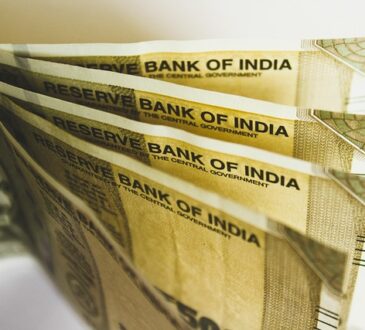NEW YORK, April 29 — The dollar edged up today but was on track for its biggest two-month fall in more than 20 years as German fiscal spending plans boosted the euro, while US economic policies undermined investor confidence in the greenback.
The common currency jumped in early March as German parties, after decades of austerity, reached a deal to sharply increase public spending, boosting growth expectations for the euro area’s biggest economy.
In early April, investors rushed into safe-haven currencies such as the yen and the Swiss franc, but also the euro, as US President Donald Trump announced tariffs that triggered fears of a full-blown trade war and a sharp global economic slowdown.
The US dollar index, a measure of the greenback’s value relative to a basket of foreign currencies, strengthened 0.25 per cent to 99.28 today after falling 0.58 per cent the previous day.
It was on track for a 7.7 per cent fall in March and April, the biggest two-month drop since May 2002.
The dollar drew support on Tuesday from reports that the Trump administration might ease the planned tariffs, though investors also fretted over a lack of progress in de-escalating the US-China trade conflict.
“Our data show persistent bond and equity outflows last week despite the recovery in US asset prices,” said George Saravelos, head of global forex research at Deutsche Bank.
“What we think matters for the dollar is what foreign investors are doing and, so far, based on our analysis the evidence is that they remain on a buyers’ strike on US assets,” he added.
A buyers’ strike occurs when investors refuse to purchase certain assets due to negative sentiment.
Softening trade stances?
The United States was set to take steps today to soften the impact of Trump’s automotive tariffs, while the US and China in recent days seemed to have softened their respective stances.
However, US Treasury Secretary Scott Bessent also said it was up to China to de-escalate on tariffs – the latest in a slew of conflicting signals over progress on trade talks between the world’s two largest economies.
The euro was down 0.38 per cent at US$1.1379 (RM4.92), but remained on track for its largest monthly gain against the dollar in more than two years as investors flee US assets and search for alternatives in Europe.
“There are many structural factors that have supported the dollar in the past decades. I don’t think they will get destroyed so easily,” said Stephen Jen, chief executive officer and co-chief investment officer at Eurizon SLJ Capital.
“The euro-dollar can go higher to 1.20-1.25, but that has always been the fair value according to our calculations.”
The greenback climbed 0.70 per cent against the Swiss franc to 0.8258 and gained 0.50 per cent to 142.70 yen, with trading subdued due to a holiday in Japan.
Analysts noted that the yen could strengthen further, as a global economic slowdown may prompt major central banks – including the US Federal Reserve – to implement deeper rate cuts, narrowing yield differentials with Japan.
US data in focus
“A week full of data releases may offer multiple opportunities to re-enter dollar shorts after some positioning rebalancing last week,” said Francesco Pesole, forex strategist at ING, adding that the markets’ focus is shifting to jobs data.
“It’s labour market weakness that can trigger a swifter reaction by the Federal Reserve,” he added.
The latest US jobs report will be a key driver for markets, along with preliminary first-quarter growth figures and core PCE data – the Fed’s favoured inflation gauge.
Data from Job Openings and Labor Turnover Survey (JOLTs) is due later in the session.
In Canada, the loonie eased 0.05 per cent to US$1.3840, after Prime Minister Mark Carney’s Liberals retained power in the election on Monday, but fell short of the majority government required to help him negotiate tariffs with Trump.
Elsewhere, the Australian dollar weakened 0.15 per cent after hitting an over four-month top of US$0.6450. — Reuters




